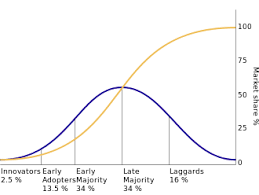Increasingly market researchers talk about System 1 and System 2 and the differences between standard market research approaches and more “advanced” approaches from implicit association tests to measuring brain activity. I believe that this dichotomy is mistaken, and that we can all combine implicit with explicit research.
Most human decision-making is dominated by implicit (System 1) knowledge, making life simpler. The challenge for market research is that implicit knowledge comes from experience through the senses and is difficult to articulate. That’s why researchers start with the most explicit verbal approaches and try to work their way to more implicit knowledge. However, they typically hit a wall when they move into knowledge that cannot be articulated or is outside awareness.
We know that human memory is vast and powerful although difficult to recall information without the right cues. However, in the words of Wendy Gordon, “…the brain’s capacity for recognition is infinitely greater than that for recall”. For example, experiments have shown that our recognition memory of images is almost limitless. By comparison, recall is difficult without the emotional and contextual cues the brain uses to identify the right memories with relevant meaning.
Visual stimuli can be useful tools in market research and the use of projective techniques date back to the origins of qualitative research and clinical psychology. Projective methods have sometimes been criticized as overly subjective. However, many of the concerns with such approaches can be addressed by creating stimuli based around theoretical frameworks and the use of larger sample sizes to validate responses.
A recent paper compared a number of approaches to measuring emotions, comparing methods across different types of emotion and different theories of emotion. The author’s conclusion was that implicit association, metaphor elicitation and other projective techniques were the only methods to work consistently across types (affect, primary, secondary) and theories (hard-wired vs learnt) in contrast to more “advanced” neuroscientific measurements.
TapestryWorks validation of our visual approaches has shown them to give more consistent, accurate and nuanced answers than typical verbal research approaches. They are also quicker and simpler to administer, provide more intuitive responses and more enjoyable to research participants.
One of the things we have learnt is that using image associations to understand implicit knowledge also helps people to articulate explicit knowledge. Images are chosen because they are recognized and therefore in some sense “familiar”. This familiarity helps provide the emotional and contextual cues to aid recall of other relevant information.
Choices of images are spontaneous and intuitive, by-passing the rational explicit brain. They often reveal emotions and associations that would not be expressed verbally. In many Asian cultures it is difficult to express negative feelings which are avoided in social settings or expressed in non-verbal and contextual ways.
Using visual approaches, it is possible to measure both positive and negative feelings in a direct, authentic and unfiltered way. For example, in one study, TapestryWorks found that Japanese women have more negative than positive feelings about their own beauty (55% vs 45%). They feel constrained by social norms and the need to maintain harmony and not disrupt the people around them. For this reason, more than 10% of Japanese women feel “trapped” by the inability to express their unique beauty.
Implicit approaches reveal implicit truths but can also be used to enable them to be explained explicitly, in ways that are not possible through standard question and answer approaches. Visual expression of emotional associations in their choice of images also gives people the freedom and cues to express them more explicitly in words.
Rather than thinking of System 1 and System 2 as a binary, market researchers should embrace System 1 and how it makes System 2 research better. Implicit emotions and associations help participants recall the reasons for those decisions. Moreover, explanations become more accurate, relevant and context specific because they are prompted by recognition of implicit feelings.
That’s why researchers should start with System 1 and work up to System 2, rather than the other way around. My experience is that once you have accessed the intuitive responses of people through recognition, it’s much easier to get them to articulate and describe their motivations, emotions and behaviours. If you start with System 2, you will struggle because you are relying on recall rather than recognition.
It is time for market research to recognize that “talking” to implicit System 1 can help them talk more effectively with explicit System 2. Think about visual approaches helping verbal approaches, use recognition to prompt memory recall and, most of all, use implicit feelings to help explicit thinking.
[This article was originally written for Asia Research magazine.]







66 Ways to Not Screw up Marketing – TapestryWorks
[…] importance of reading between the lines of what people say. Quicker and intuitive approaches (see here) to research are more likely to get answers from System 1, while considered and deliberate […]